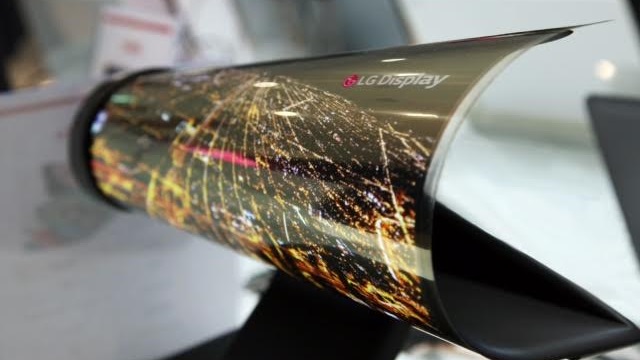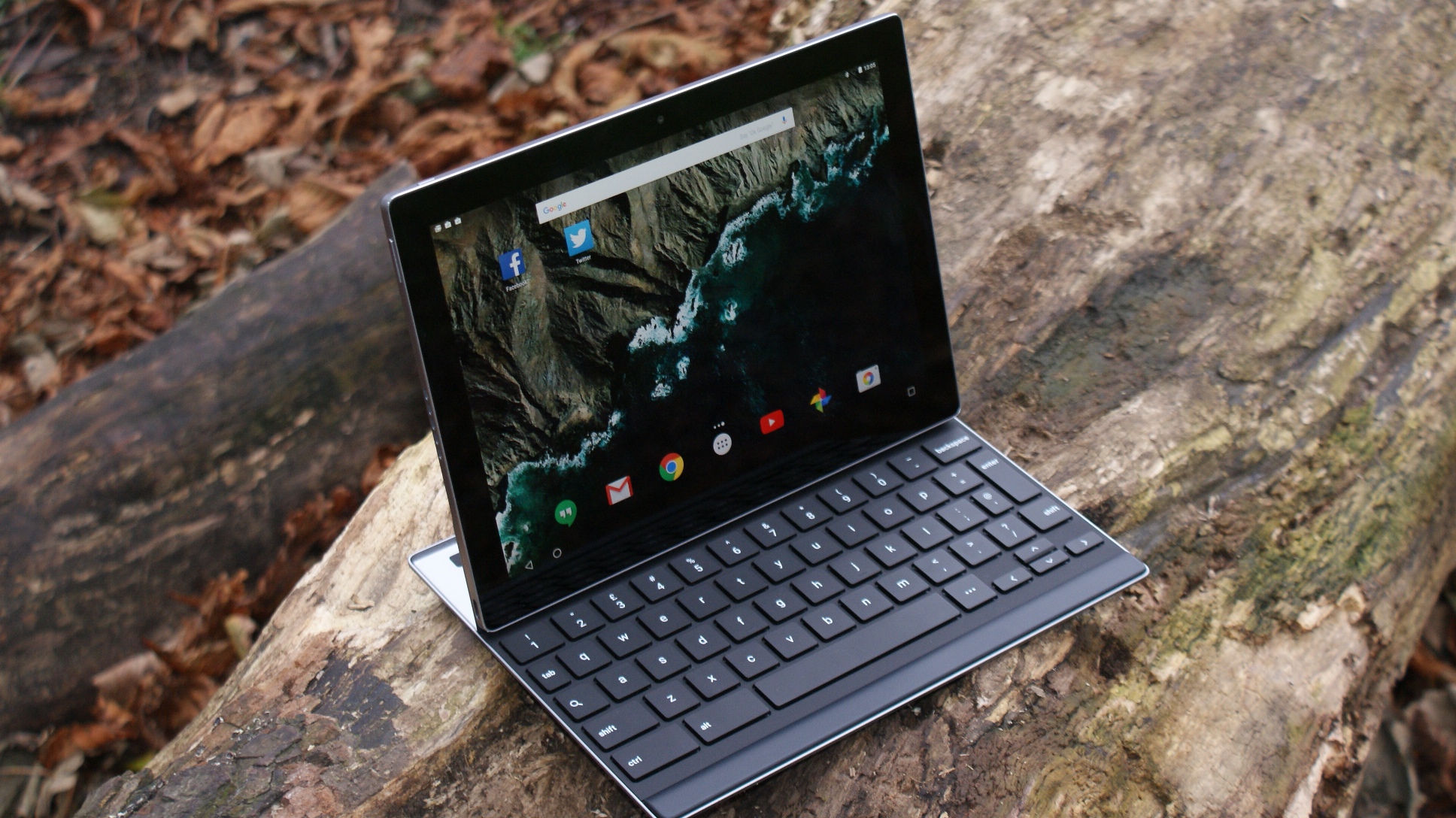Android in 2020: how much could Google's OS change?
Android Rocky Road?
Android hardware in 2020
Hardware innovations are going to play a big part in Android's roadmap. Besides the obvious smaller, thinner, faster improvements for our phones, bendable screens should be in place in the near future.
Last year we saw the Galaxy S6 Edge become arguably the first mainstream Android phone with a curved display (following 2014's niche Galaxy Note Edge). As this technology becomes more commoditised, we can we expect more devices to have curved displays.
By 2020 though, could we perhaps even see the first genuinely flexible displays make their way into our smartphones? It's predicted, by research firm IHS, that in that year over half of all flexible displays will be foldable in 2020 - if that's the case, then Android will surely have a function within it to take advantage of that functionality - rollable and curved displays will be popular by this point too, and we'll apparently even be seeing the early looks at stretchable screens.

One other new technology that might make its way into phones is what has been dubbed "lifi". This is wireless signals sent using visible light: by having an bulb flicker slightly dim and brighten many thousand times a second, data can be transmitted 100 times faster than wifi according to the scientists that pioneered it (and don't worry, the lights appear normal to us - our brains can't comprehend the flickering).
Apple is rumoured to be already interested, so don't be surprised if it fast becomes standard on Android if the technology becomes standard in many homes.
It is also likely that we'll see Android move into even more diverse form factors as the platform is used as an embedded operating system on some "Internet of Things" devices, which are set to become more common.
The dearly departed Google Glass was also driven by Android under the hood - and since its demise there have been persistent rumours that Google is working on a new version, this time aimed at industry and enterprise.
Sign up for breaking news, reviews, opinion, top tech deals, and more.
We can also expect to see Android TV and Android Auto finally take their place by 2020.
Android TV should eventually fit nicely into the TV landscape, solving the problem of having a large number of different Smart TV operating systems - which means that if developers (like, say, Netflix) want to build an app for a Smart TV, they have to build separate apps for Samsung, LG, Panasonic and so on.
If Google can achieve the same success with Android TV as it has with Android on phones, then we'll see an explosion in the number of smart TV apps. And about time too. At the time of writing, Sony, Sharp and Philips are already on board, and as long as it doesn't suffer from the same fragmentation of specs as on Android phones (and need to customise the apps for different form factors) then it will be a popular choice.
Cars have a similar problem, but by 2020 we can expect to see more new cars building in support for Android Auto into dashboards.
Like rival Apple CarPlay, this works on the principle of "dumb screen, smart device plugged in", because people upgrade their phones more often than they do cars. Though the technology has been around for a couple of years, it has been slow to take off due to the long lead-times on building cars.
But hopefully by 2020 we'll see more cars including support for the technology that we'll be able to keep using for some years to come - Ford, Honda, Volvo and Volkswagen are all signed up to support the Android platform in the car, which will mean more apps and more effort put into the platform.
It's predicted we'll have 40 million cars on the road using Android Auto by 2020, according to Business Insider, and it'll be outstripping Apple's CarPlay in the same way as the smartphone platform is now - albeit by a smaller margin.
We can also expect to see more aftermarket Android Auto devices too. Added together, by 2020 we finally should reach a critical mass of smarter vehicles on the road, so that Android Auto can get into the virtuous cycle that more users will encourage developers to build more Auto apps, and more apps will mean more users.

Finally, we might even see Android move into… umm, computers, although we're at an inflexion point as to whether this will actually happen.
As Google demonstrated with it's Pixel C, it has taken aim at hybrid laptop/tablet devices - so we could ultimately see Android devices come out in a laptop form-factor, and on the software side see more support for keyboard shortcuts, multitasking (split screen is a much-requested feature), and a much closer relationship with Google's Chrome operating system.
The issue is that, right now, Android doesn't really support the laptop form factor in the same way as the Chrome OS does, so unless Google gets to work at making Android a viable alternative to the iPad Pro and Surface Pro 4, 2020 certainly won't see any laptop hybrids using its smartphone platform.
And then we get into the more fantastic stuff - imagine a time where you won't need to take photos any more, since Google will simply pick out the best pictures from an unedited stream of the day's events.
Nor will you need to decide what to eat for dinner - Android 2020 will know what you've been doing today (and what you're probably doing tonight) thanks to your Android Wear smartwatch, and will pick out the most suitable foods for you for based on your efforts and exertion... but then we're getting into a really creepy area of surveillance and suggestion.
Android: the 2020 edition
The only certainty about Android's future is that it has a fight on its hands to stay competitive. Apple's iOS 9 has given Google plenty to think about - partly by borrowing features from Android, like the new "proactive" elements of Siri, but it'll always be a threat to Android's dominance.
The other big challenge to Android's dominance might be… well, Android itself. Though the "official" Google version is run on around two thirds of Android devices, manufacturers are increasingly turning to forks of the open source OS.
For example, Chinese juggernaut Xiaomi has opted to use its own "MIUI" spin-off, which adds its own features and doesn't use Google's services, and it's becoming a large threat to the established brands.
OnePlus, which has received plaudits for making handsets that are both cheap and powerful uses its own Oxygen OS, and CyanogenOS is showing up on phones from other manufacturers.
At the start of this year, there were even rumours that Amazon is attempting to cosy up to mobile manufacturers in a bid to get back into mobile after its disastrous FirePhone in 2014.
The suggestion is that rather than make its own phones, it wants existing manufacturers (like, say, Samsung or HTC) to use its software and services, such as the Amazon App Store rather than Google Play - meaning that Google won't get a penny.
There is also the risk of fragmentation on Google's own version of Android. At the moment, updates to the OS are pumped out via carriers and manufacturers rather than Google at source.
This means that not only does it create security problems (what if there needs to be an emergency patch if someone discovers a massive bug?), but also that as a result, many different versions of Android are in use simultaneously - Lollipop, unveiled in 2014, is still only on a third of all smartphones.
If users aren't upgrading consistently (as on iOS), it means that developers have to worry about supporting more versions, and that newer features may not be used so that older users can keep up.
However, with more platforms, loads more apps to be made for those systems and different form factors serving all kinds of needs, Android in 2020 is going to be more intuitive - and more involved in our lives - than we could have even imagined 8 years ago.

Dave is a freelance tech journalist who has been writing about gadgets, apps and the web for more than two decades. Based out of Stockport, England, on TechRadar you'll find him covering news, features and reviews, particularly for phones, tablets and wearables. Working to ensure our breaking news coverage is the best in the business over weekends, David also has bylines at Gizmodo, T3, PopSci and a few other places besides, as well as being many years editing the likes of PC Explorer and The Hardware Handbook.